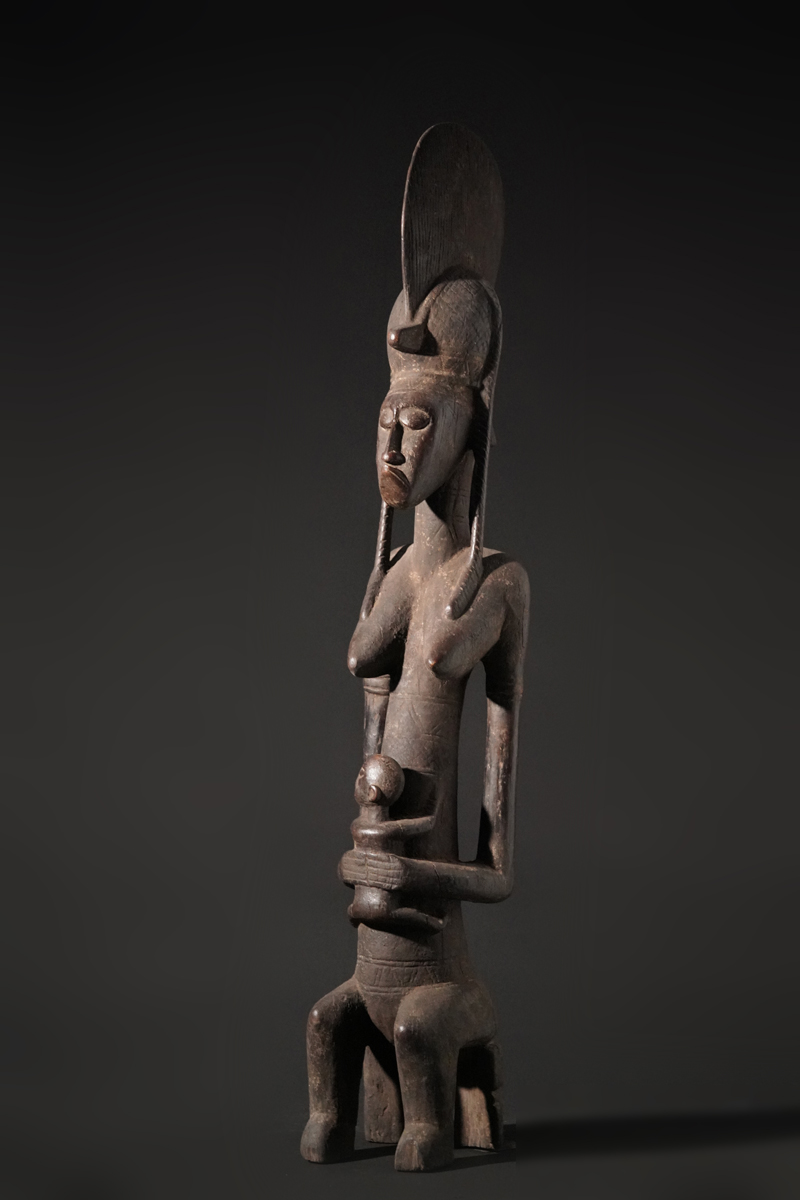|
A Gwandusu or Jomooni sculpture, northern Mali, a seated mother and child, showing the typical characteristics: a thick cylindrical torso, broad shoulders and a smoothly curved ovoid head, the arms and legs connect to shoulders and hips in a fluid manner. Scarifications on the belly, neck and face. The child sits against the mother's belly, who holds it with both hands, she wears a high helmet-like headdress from which plait-like formations hang down onto her firm, slightly tapering breasts, at the nape a ponytail hangs out from under the helmet, her face is elongated, the corners of her mouth bent sharply downwards convey a scowling expression, intensified by the downcast eyes and the very narrow nose with its knobby tip; a thick, beautiful patina, signs of intense cultic use. According to Kate Ezra (A Human Ideal in African Art: Bamana Figurative Sculpture, 1986), specific sculptures depicting a seated female figure with an infant to her torso are called Gwandusu. The name implies ideal female child bearing attributes as strength, courage, passion and conviction of motherhood. Lit.: Kate Ezra, A Human Ideal in African Art. Bamana Figurative Sculpture, National Museum of African Art, Metropolitan Museum of Art and Smithsonian Institution, 1986. Bamana. Kate Ezra in: Mary Jo Arnoldi, The Art of Existence in Mali. Museum Rietberg, Museum for African Art (New York, N.Y.), 2001, p. 130, Cat. 121, 122. sold Height: 111 cm |
 photo: wolfgang-jaenicke.com, for more information, please write us an e-mail with the identification number of the photo identification no. ABC09535.jpg |